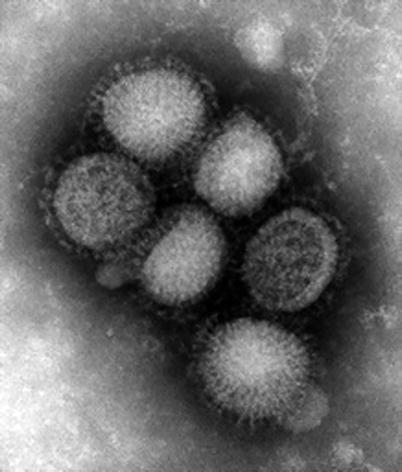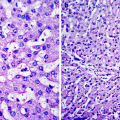and LI Ning2
(1)
Radiology Department, Capital Medical University Beijing You’an Hospital, Beijing, China, People’s Republic
(2)
Capital Medical University Beijing You’an Hospital, Beijing, China, People’s Republic
Abstract
The first case of Influenza A(H1N1) in the United States was definitively diagnosed by laboratory tests on Apr. 15, 2009.
2.1 Causes of Influenza A (H1N1)
The first case of Influenza A (H1N1) in the United States was definitively diagnosed by laboratory tests on Apr. 15, 2009.
Researchers have found that the Influenza A (H1N1) virus is a very complex strain deriving from four kinds of mutant viruses, namely one bird flu virus, one common flu virus and two swine flue viruses spreading widely between pigs. Its components also confirmed that the gene rearrangement and recombination of Influenza A (H1N1) virus commonly and extensively occurs (Table 2.1).
Table 2.1
DNA origin of Influenza A (H1N1) pandemic in 2009
HA | Hemagglutinin | Swine (H1) | North America |
|---|---|---|---|
NA | Neuraminidase | Swine (N1) | Europe |
PA | Polymerase subunit A | Birds | North America |
PB1 | Polymerase subunit B1 | Human | 1993 H3N2 strain |
PB2 | Polymerase subunit B2 | Birds | North America |
NP | Nucleoprotein | Swine | North America |
M | Matrixprotein (M1, M2) | Swine | European and Asian |
NS | Non-structural NS1, NEP | Swine | North America |
2.2 Morphological Structure and Physiochemical Features of Influenza A (H1N1) Virus
2.2.1 Morphological Structure
Influenza A (H1N1) virus (Fig. 2.1) can be classified into orthomyxoviridae, the genus of influenza viruses A, and is linear single minus-strand RNA with varying shapes. In general, it is an envelope virus in sphere shape, with a diameter of about 80–120 nm. On the surface of the envelop, there are many protuberant glycoproteins in radial arrangement, namely spikes and fibers which are column liked hemagglutinin (HA), mushroom shaped neuraminidase (NA) and membranous matrix protein 2 (M2). Inside the viral particles is helically symmetrical nucleocapsid, with a diameter of 10 nm. The ring shaped structures of its both ends are in the viral envelope, containing eight different sized independent segments and the genome size of about 1,316 kb. Influenza A (H1N1) virus is susceptible to inheritably mutation due to its multiple serotypes, whose mechanism involves molecular antigen drift and shift.
2.2.2 Physiochemical Features
The Influenza A (H1N1) virus is an enveloped virus, being sensitive to organic solvents such as diethyl ether, chloroform and acetone. Its infection power can be destroyed in 200 ml/L diethyl ether at 4 °C overnight. As the virus is also sensitive to oxidant, chloride, heavy metals, ethanol and formaldehyde, it can be inactivated in 750 ml/L ethanol for 3 min, in 1 ml/L iodine tincture for 5 min, or in 1 ml/L formaldehyde for 30 min. In addition, the virus is sensitive to heat, being inactivated at 56 °C for 30 min; and to ultraviolet rays, but the virus being inactivated by ultraviolet may have multiple reactivation.
Figure 2.1 is an electronic microscopic photo of round Influenza A (H1N1) virus released by the CDC of the US, showing the viral particles.


Fig. 2.1
Influenza A (H1N1) virus
2.3 Molecular Biological Features of Influenza A (H1N1) Virus
The Influenza A (H1N1) virus is a type of influenza A virus, carrying H1N1 subtype of swine flu virus strain. It has RNA gene segments of bird flu virus, swine flu virus and human flu virus, with concurrent properties of Asian swine flu virus and African swine flu virus. Medical laboratory tests demonstrated that the current antiviral drugs are effective to inhibit this virus strain [1–3].
Influenza A virus has hundreds of different flu virus subtypes. The nomination of these subtypes is derived from the differences of H and N, indicating two different proteins on the surface of influenza A virus. H (hemagglutinin) acts like a key to help the virus to open the door of the host cells; while N (neuraminidase) functions to destroy the receptor of cells, allowing free spread of the virus in the body of the host.
2.3.1 Genes of Influenza A (H1N1) Virus
2.3.1.1 HA Genes
The HA genes nucleotide sequence of the present influenza virus strain is 93 % homologous to the H1N2 swine flu virus strain separated early in the US. In addition, it shares a 95 % homology with H1 swine flu virus (A/Swine/Indiana/P12439/00(H1N2)) isolated in Indiana. The homology indicates that the HA genes of Influenza A (H1N1) virus are derived from the local swine flu virus of North and Middle America due to gene mutation.
Stay updated, free articles. Join our Telegram channel

Full access? Get Clinical Tree




